
 |
|
|
|
Imagine a Soviet space film about a journey to the moon, filmed during the Stalin era, that is almost as scientifically accurate -- and far more elaborate -- than American films made twenty years later. Released for only a short time in 1936 and then withdrawn for political reasons, the movie remained virtually unknown for almost fifty years. Now it can be seen. 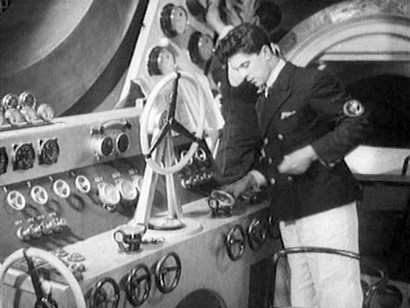
Science fiction film enthusiasts have long assumed that scientifically accurate films about space travel began in 1950 with George Pal's Destination Moon, a colorful docu-drama that predicted many details of the real space missions to follow. Before 1950 the only American films about space travel were the Buck Rogers and Flash Gordon fantasies, and the equally un-scientific musical comedy Just Imagine. In England, H.G. Wells' Things to Come (1936) took a step backward and revived Jules Verne's notion of a cannon shell as a moon vehicle. Fritz Lang's 1929 German silent Woman in the Moon was the only previous space adventure credited with a modicum of scientific integrity. It introduced the "10, 9, 8..." inverted countdown for its massive rocket, but its vision of a moon with a breathable atmosphere and warm temperatures lagged way behind the science of the day. Only after the Second World War, when the Germans' deadly V-2 weapons had proven what rockets could do, did space travel loom as a real possibility. Soviet pride in their Sputnik satellite and superior manned space program was reflected in Eastern-bloc movies about brave scientists from harmonious socialist nations collaborating on lavish spaceflights: Nebo zoyvot (The Heavens Call), Mechte navtrechu (Toward Meeting a Dream), Planeta bur (Storm Planet) and Der schweigende stern (The Silent Star). Original versions of these films did not become widely available in the West until the collapse of the Soviet Union. 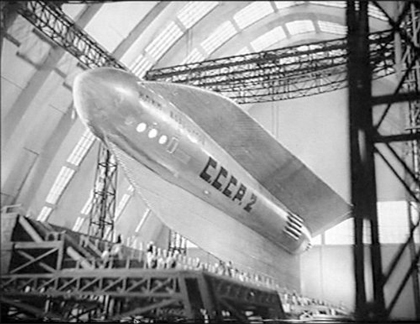
In 2006 a group of vintage Russian fantasy films toured American museums and screening societies. Among the titles was Kosmitcheskiy reys: Fantasticheskaya novella from 1936, an astonishing silent movie about a trip to the moon that had previously appeared only as a mention in a couple of reference books. The title translates literally as "Space Flight: A Fantastic Story". Video Dimension's new Region 1 DVD appears to be an uncut copy. The original Russian main titles have been replaced with new cards bearing the most common English title, Cosmic Journey The film harnesses impressive special effects to an exceedingly simple story set in the "future" year of 1946. The white-bearded visionary academic Pavel Ivanovich Sedikh (Sergei Komarov) has overseen the construction of the "USSR Tsilkovsky Institute of Interplanetary Communication" (TIIC), a Cosmodrome where two enormous spaceships are ready for launch, Joseph Stalin and General Voroshilov. 1 Young flight officer Viktor Orlov (Nikolai Feoktistov) agrees with Professor Karin (Vasili Kovrigin) that the elderly Pavel should not go on the moon flight. A rabbit shot into space has returned dead of a heart attack, giving weight to Karin's objections. Karin insists on shooting another probe to the Moon's surface, carrying a live cat. Pavel impulsively decides to launch the Stalin on his own authority. He asks his associate (and Viktor's sweetheart) Professor Marina (K. Moskalenko) to accompany him, and receives an enthusiastic "Yes!" Pavel's dotty wife insists that he take along a pair of warm boots; she's been told that the moon is very cold. Pavel invites Victor's kid brother Andryusha (Vassili Gaponenko) to bring members of his Youth League to witness the launch. Andryusha boards the Stalin at the last moment and announces his intention to stay. Once free of the Earth's gravity, the trio enjoys the weightlessness of the space voyage. The moon landing is successful but a ruptured pipe allows the ship's oxygen supply to escape, jeopardizing the return trip. They also cannot locate the probe missile containing the cat-cosmonaut. Undeterred, the Cosmonauts leap about the moon's surface, and spell out the letters "CCCP" in lights that can be read from Earth. When no radio contact can be made, Professor Karin assumes that the Stalin is disabled. He orders the second rocket prepared as a rescue craft. Meanwhile, Pavel has fallen into a deep moon crevice and cannot signal his comrades. The impromptu moon flight may end in disaster. 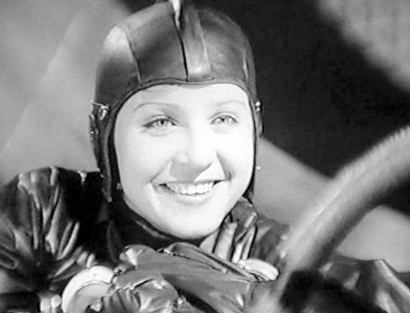
The plotline of Cosmic Journey may be juvenile but its science is not. Russia's Konstantin Tsilkovsky had speculated on the practicality of space travel in the 1880s. His 1903 scientific study of the subject addressed most of the basic concepts, such as calculations for escape velocity. The brilliant Tsilkovsky is also credited with inventing the space elevator, a concept popularized in Arthur C. Clarke's 1979 science fiction novel The Fountains of Paradise. Cosmic Journey is adapted from one of Tsilkovsky's books and the science in the film is based on his teachings. Kosmicheskiy Reys was commissioned by the Communist Youth League Komsomol to promote science among Soviet children. But as happened with many state-controlled films during the Stalin years, soon after its premiere it was withdrawn for its failure to follow the approved Social Realist style. The Cosmonauts' playful adventures on the moon did not sit well with censor requirements that every Soviet film promote a narrowly defined collectivist ideology. But the Stalin's mode of launch suggests that Kosmitcheskiy Reys did see screenings abroad. The ship shoots skyward up a mile-long inclined ramp, a fanciful idea that was re-used just the next year in the impressive German short subject Weltraumschiff 1 startet.... An inclined missile ramp also saw practical service in real life with the dreaded V-1 cruise missiles. George Pal adapted the ramp idea as a dramatic mode of launch for the Space Ark in his 1951 epic When Worlds Collide. The miniatures representing the space ships, their gigantic hangar and the surface of the moon are more elaborate than in any science fiction film until Stanley Kubrick's 2001: A Space Odyssey. Special effects designer and animator Fodor Krasne introduces the twin rockets in a seemingly endless stop-motion animated trucking shot down the full length of the ships lying in their launch cradles. The intricate scene includes scores of moving cranes, vehicles, and workers. Several exterior sections of the rocket and its gantry were constructed full scale, and the entrance to the TIIC resembles a spacious white hotel lobby. The rocket interior is a sturdy construction of steel that appears capable of carrying a dozen Cosmonauts. One very interesting detail is a line of glass water tanks. The space travelers launch and land while submerged in water, to protect them from the physical shock. The sight of the three voyagers sitting as the tanks fill with water reminds us of the 'disintegration tubes' in the later This Island Earth and similar apparatus in Forbidden Planet that enable humans to travel at near- light speed. 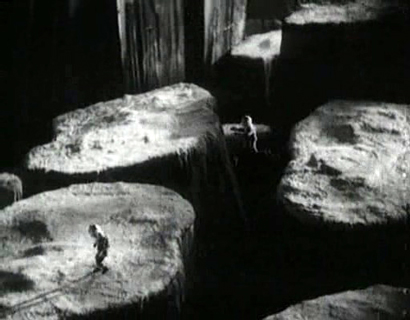
Sophisticated stop-motion animation techniques are used to show the spacemen leaping about the rugged lunar terrain, just as in H.G. Wells' First Men in the Moon. The realistic puppets are very smoothly animated, as is the camera that follows them across the lunar landscape. Fine wires support the spaceman puppets when they jump, and even do back-flips. Cosmic Journey repeats Fritz Lang and Thea von Harbou's notion of a technical mishap that threatens the moon mission. Also repeated is the idea of a youthful space stowaway, to provide an identification figure for younger audience members: Pavel Sedikh repeatedly dedicates his flight to the Youth of Tomorrow. The Youth League scout Andryusha turns out to be a godsend when Pavel uses his homemade peashooter to signal for help. Andryusha cries only once, when he discovers that his comrades have chosen not to tell him about the oxygen crisis. As a good Soviet youth, danger is a trifle next to his desire to be accepted as a full member of the mission. The beautiful Marina mostly provides encouragement through her bright, sincere smiles. She had previously shoved her fiance´ for daring to suggest that the elderly Pavel not go to the moon. Pavel Sedikh's personal pride and individualist ambition apparently rubbed Soviet censors the wrong way. At this point in time, the Stalin ideologues preferred self-effacing heroes that credit all personal accomplishments to the collective body. 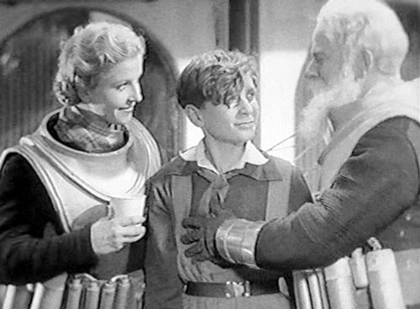
Kosmitcheskiy reys: Fantasticheskaya novella was the second film of Vasili Zhuravlyov, a director not well documented in the West. But his screenwriter Aleksander Filmonov also wrote 1953's Serebristaya Pyl (Silver Dust) a controversial comedy-drama set in the United States. At a time when Soviet and American film representatives competed in publicity-driven "culture wars" at international film festivals, our state department condemned Silver Dust as anti-American propaganda. Video Dimension's DVD of Cosmic Journey is a good encoding of this all-but-unknown science fiction marvel, an impressively designed and filmed vintage space adventure. We're told that even though sound had been introduced to Soviet films in 1930, various state studios continued to make silent features. The original Russian inter-titles use an interesting type. Video Dimension's English subtitles can be dropped. When shown in 35mm at the traveling exhibition, Kosmitcheskiy reys carried a soundtrack composed of needle-drop classical music. This DVD probably uses the same track. The compositional imbalance produced by dropping the soundtrack over the extreme left of the image soon becomes apparent. Action is cramped on the left of the screen and compositions overall are slightly off-center. The reasonably sharp B&W transfer gives us excellent views of the enormous miniatures at the space complex, a giant complex of hangars on the outskirts of Moscow. The roller coaster- like launching ramp looks like a giant suspension bridge. The hangar interior miniature may be the biggest and most elaborate stop-motion miniature setting ever built. Video Dimensions offers their disc on Amazon. Three extras are included, low-grade copies of the 1902 A Trip to the Moon, a chapter of Flash Gordon and what looks like the old 8mm cut-down version of 1958's Cosmic Monsters.
On a scale of Excellent, Good, Fair, and Poor,
Cosmic Journey rates:
Footnotes:
1. General Kliment Voroshilov's name on the rocket carries a definite chill factor: the general would soon become a major player in Stalin's deadly purges, personally denouncing army officers and offering his name as a signatory to nearly 200 death warrants.
Reviews on the Savant main site have additional credits information and are often updated and annotated with reader input and graphics. Also, don't forget the 2011 Savant Wish List. T'was Ever Thus.
Review Staff | About DVD Talk | Newsletter Subscribe | Join DVD Talk Forum |
| ||||||||||||||||||